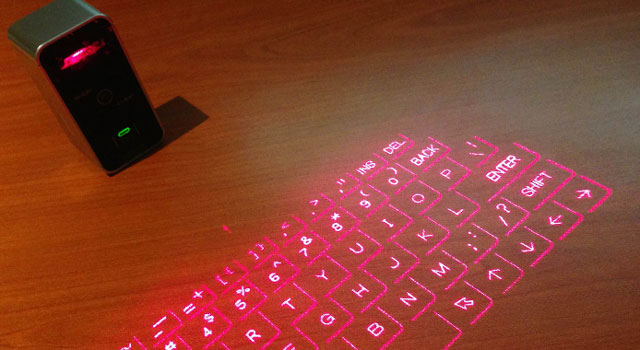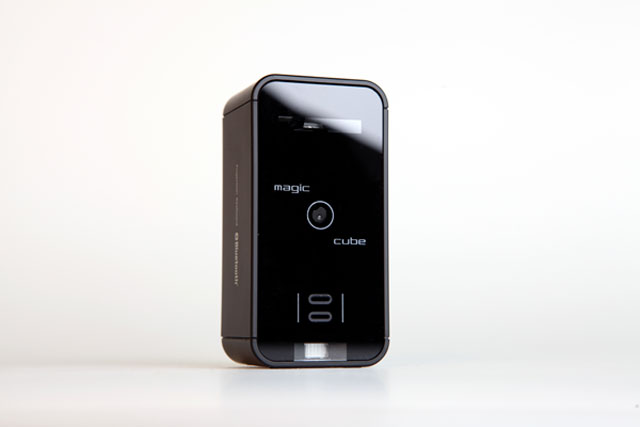
On paper, the Celluon Magic Cube projection keyboard is great. It’s a light, thoroughly portable unit that connects by cable or Bluetooth — meaning it works with phones, tablets and desktop or laptop computers — and projects a keyboard onto most level, opaque surfaces using an attention-grabbing shade of red. In practice, however, it’s infuriating.
To begin with there’s the noise it makes. Every key press is accompanied by what at low volume sounds like a click and at higher volume a beep. No doubt intended as a means of confirming a key press in the absence of physical feedback — particularly for those who touch type and seldom look at the keyboard — the sound is annoying, to put it mildly.
The volume of the keyboard sounds can be altered using a combination of the FN key and the up and down arrows, but this isn’t a painless experience either because, in lieu of support for multi-touch input, the FN key has to be activated for each adjustment — unlike with physical keys, one can’t simply hold the FN key down and then press an arrow key repeatedly.
Once we managed to turn the sound off, thus rendering the Magic Cube suitable for public use, the problem of accuracy arose. Despite being able to adjust the keyboard’s sensitivity using the FN key and the left and right arrows, and in spite of its claims to handle input speeds in the region of 50 words a minute, we found it impossible to type normally and get accurate results.
If you’re anything more advanced than a two index finger typist, the Magic Cube will disappoint you. If, like us, you’re the sort of person who types for a living, it’s not even worth a second glance. If, however, you’re looking to start conversations with strangers in coffee shops, it’s the perfect device because, for now at least, a projected keyboard is a curiosity.
That’s the problem with the Magic Cube: it looks great but fails at its core function.
Then there’s the issue of its price. At R1 995, the Magic Cube is staggeringly expensive for what it is. Considering one can get a physical Bluetooth keyboard for a third or even a quarter of the price, it’s impossible to recommend the Magic Cube instead.

Also, while being able to use any flat surface as a keyboard is nifty, it’s a less than inspiring experience. Bashing a wooden table with your fingertips and without the cushioning afforded by physical keys soon becomes uncomfortable. Furthermore, unless the surface is perfectly flat, the keyboard won’t work.
Finally, the Magic Cube’s built-in battery — charged by means of a mini-USB (rather than the more popular micro-USB) cable — is only good for a little over two hours. For the bona fide digital nomad that’s dismal.
At best, the Magic Cube is an interesting pointer of things to come. At worst, it’s an overpriced gimmick that is more of a hindrance than it is a useful tool. — (c) 2013 NewsCentral Media
- Reviewed unit supplied by Orange

